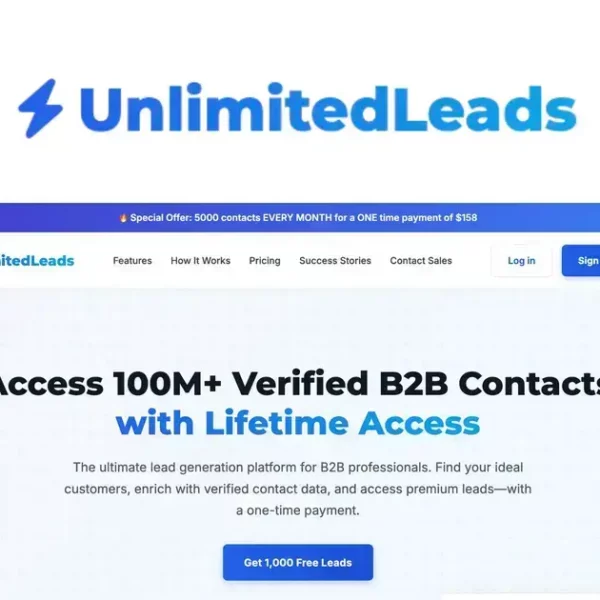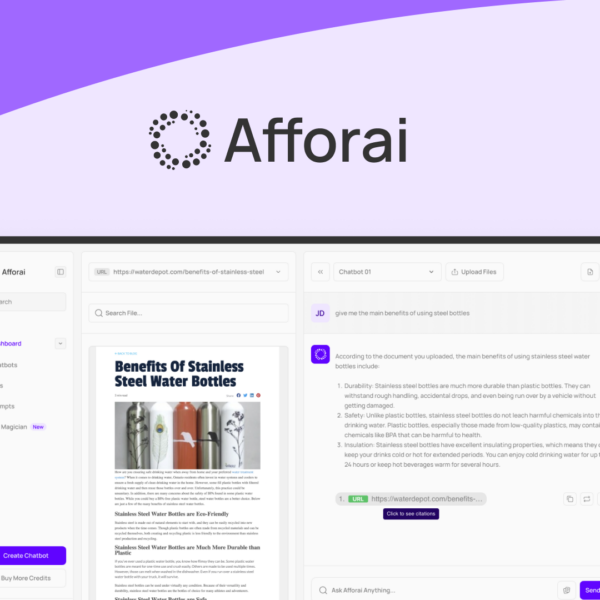If you’re venturing into the world of SaaS products, it’s crucial to choose wisely! With so many options available, how can you ensure the lifetime deal you pick truly benefits your business? Let’s explore some essential tips!
Research the Developer and Company
When considering a SaaS lifetime deal, it’s vital to research the developer and company behind the product. A trustworthy company will have a solid reputation. Look for reviews and testimonials from other users. This helps you see what to expect from their service.
Check how long the company has been in business. Older companies may offer more stability. Newer startups can be exciting but come with more risk. You want to feel confident that the company will be around in the future to support their product.
Company Reputation
Investigate the company’s background. A good way to start is by visiting their website. Look for their mission statement, about page, and contact information. A transparent company shows they have nothing to hide.
Also, check social media platforms. See how they interact with customers. Are they responsive to inquiries? Do they address complaints quickly? This can reveal a lot about their customer support.
Product Support and Updates
Ensure that the company provides regular updates and support. Read their FAQs or help sections. A company that actively updates their product shows they care about improvement and value their users’ feedback.
Support is crucial. If you run into problems, you want to know there’s help available. Look for chat options or quick email responses. This can vary greatly between developers, so be sure to assess this aspect closely.
Community Feedback
Engaging with user communities can provide insights. Check forums or groups where users discuss their experiences. Seeing real feedback can help you gauge whether the product is right for you.
Researching the developer is not just about finding a good product; it’s about ensuring the company behind it is reliable. This approach sets you up for success with your SaaS choice.
Check Recent Features and Updates

When selecting a SaaS product, you should check recent features and updates. This helps ensure you’re getting a tool that evolves with your needs. Features can greatly affect how effectively a software works for you.
Start by visiting the product’s website. Many companies showcase their latest updates prominently. Look for blogs, release notes, or a changelog. These sections will give you insight into what has been added recently.
Importance of New Features
New features often mean improvements. They can enhance usability, fix bugs, or add new capabilities. You want to benefit from the latest technology and make full use of the software.
Some products claim to be feature-rich but don’t update often. This can make them outdated quickly. Always check how frequently the company rolls out new features. Regular updates show commitment to user satisfaction.
User Feedback on Updates
Consider how users respond to new features. Look for reviews online. Good feedback can indicate that recent updates have positively impacted user experience. Bad reviews can point to ignored issues or ineffective changes.
You might find forums or social media discussions where users share their thoughts. Engaging with these communities can give you real-world insights about the product’s effectiveness.
Testing New Features
Some companies even allow you to test new features before full rollout. Look for beta programs where you can give feedback. This interaction can enhance your experience and provide you a voice in the development process.
By checking recent features and updates, you ensure that the SaaS product aligns with your business goals. This research step can make a big difference in your success.
Review the Product Roadmap
Before committing to a SaaS product, it’s important to review the product roadmap. This roadmap shows where the software is headed in the future. It gives you a glimpse of upcoming features and improvements.
A clear roadmap shows the company’s plans for product growth. It might include new features, enhancements, or integrations. Understanding these goals helps you see if the product will continue to meet your needs over time.
Importance of a Roadmap
A well-defined roadmap can be a sign of a focused and committed company. If they share their plans openly, they likely value transparency. This openness can build trust between you and the company.
Check for timelines on when new features are expected to roll out. Timelines help you know how quickly the company can adapt to trends and customer feedback. A responsive company can make all the difference.
Assessing Vision and Strategy
Look for information about the company’s vision. This can tell you how they plan to grow in the future. A strong vision means they’re likely investing in their product. It indicates a commitment to quality and user satisfaction.
Also, evaluate their strategy for addressing user needs. If their roadmap aligns with trends in your industry, that’s a good sign. It shows they are listening to customers and adjusting accordingly.
Community Input on the Roadmap
Some companies gather input from users about their roadmap. Check if the company holds surveys or feedback sessions. User suggestions can shape future features. This can enhance your experience with the product directly.
By reviewing the product roadmap, you get insight into the product’s growth and potential. It helps you make a smart decision for your business needs.
Engage with Their Support Team

Engaging with the support team of a SaaS company is vital when choosing a product. Their responsiveness can provide insight into how well they care about their users. Good support can make a big difference in your experience.
Start by reaching out with a quick question. This will help you see how fast they reply. A quick response often shows they value your time and concerns. Take note if they’re friendly and helpful, too.
Types of Support Available
Different companies offer various support options. Common types include email, live chat, and phone support. Check which options they have. It’s great if they provide multiple ways to contact them.
Some companies also have support forums or knowledge bases. These resources can help you find answers without needing to contact support. See how thorough these resources are. They should answer most common questions easily.
Response Times and Availability
Response times can vary. Make sure to ask about their typical wait times. A company that can provide answers quickly shows they’re dedicated to customer service. You don’t want to be left waiting for days.
Also, check their support hours. Some companies offer 24/7 support while others may only help during business hours. Choose one that fits your needs. If you might need support outside regular hours, 24/7 is ideal.
Feedback and Improvements
A good support team should not just solve problems. They should also gather feedback from users. This feedback helps them improve the product. It shows they care about making things better for their users.
Ask if they have plans to improve their support based on user feedback. This can give you confidence that your concerns will be heard. Engaging with their support team is essential for a positive experience.
Assess Current or Future Needs
When choosing a SaaS product, it’s essential to assess current or future needs. Understanding what you require helps you find the right tool. Start by listing the tasks you need to accomplish right now.
Think about the features that would make your work easier. Do you need better collaboration tools or more data storage? Knowing these details narrows down your options significantly.
Identify Long-Term Goals
Also, consider your long-term goals. Where do you see your business in the next few years? Choose a product that can grow with you. This means looking for features that may not be essential today but will be later.
Scalability is vital. Look for software that allows you to add users or features as needed. This flexibility saves you from investing in a new product down the line.
Engage with Your Team
Talk to your team about their needs. They can offer insights into what features will help them most. Involve them in the selection process. This ensures you choose a product everyone will use and benefit from.
Gather feedback from your team on any previous software they’ve used. Understanding what worked and what didn’t can guide your choices.
Monitor Industry Trends
Keep an eye on industry trends as well. New tools or features can quickly become popular. Staying informed ensures you’re not missing out on something that can improve efficiency.
Considering both current and future needs helps you make a smart choice. It sets you up for success and keeps your business running smoothly.




